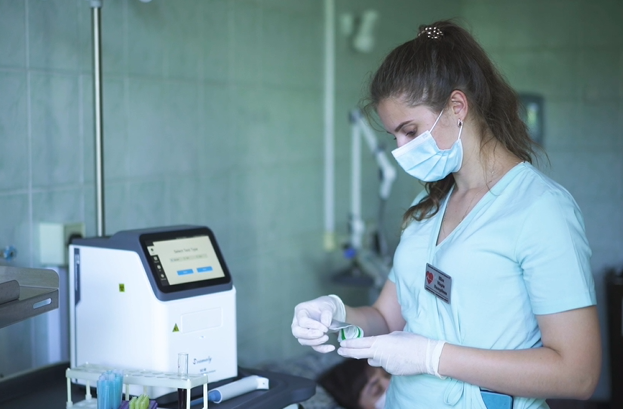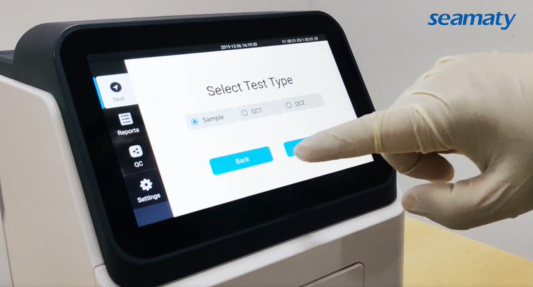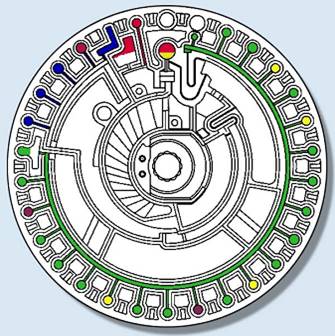release time:2025-01-14 15:02:33
Introduction:
Chemical analysis plays a crucial role in modern healthcare and diagnostics. Two prominent methodologies for conducting these analyses are dry chemistry and wet chemistry. In this article, we will explore the differences between these two methods, their respective applications, and introduce Seamaty's SD1 dry chemistry analyzer as an example of this innovative technology.
Wet chemistry involves chemical reactions conducted in a liquid phase. For instance, the Triglyceride assay is a classic example of wet chemistry. In this method, triglycerides are extracted from serum, proteins are precipitated, and glycerol is released using potassium hydroxide. Subsequently, glycerol is oxidized with sodium periodate to form formaldehyde. The fluorochrome is then produced through a chromogenic acid reaction or acetylacetone color development, which can be determined via fluorometric or colorimetric methods.
Dry chemistry, on the other hand, is characterized by the use of minimal water in chemical reactions. A notable example is urine testing, which has transitioned from traditional methods involving reagents in test tubes to the modern "dry chemistry" approach. In dry chemistry, the reactions are performed with dry test strips and instruments.
Now, let's delve into the key differences between dry chemistry analyzers and wet chemistry analyzers:
A. Types of Reagents:
a. Fully Automated Chemistry Analyzer (Wet Type):
- Utilizes liquid reagents.
- Measures specific chemical compositions in body fluids based on the photoelectric colorimetric principle.
b. Fully Automatic Dry Chemistry Analyzer:
- Employs dry tablet reagents, eliminating the need for liquid reagents.
B. Scope of Use:
a. Fully Automated Chemistry Analyzer (Wet Type):
- Known for its rapid measurement speed.
- Offers high accuracy.
- Requires a relatively small amount of consumed reagents.
- Widely utilized in hospitals, epidemic prevention stations, and various healthcare facilities.
b. Automatic Dry Chemistry Analyzer:
- Primarily used for clinical blood and urine specimens in biochemical project testing.
Among the notable dry chemistry analyzers available, Seamaty's SD1 dry chemistry analyzer stands out for several reasons:
- Ease of Operation: The SD1 is user-friendly and straightforward to operate.
- Compact Design: It boasts a small footprint, making it suitable for a variety of settings.
- Minimal Sample Volume: Requires only a small sample volume for testing.
- Long Shelf Life: Utilizes lyophilized reagent beads with a shelf life of up to 1 year, ensuring reliability and cost-effectiveness.
In summary, the choice between dry chemistry and wet chemistry depends on specific analytical needs. Wet chemistry offers precision but often requires more resources, while dry chemistry is efficient and well-suited for certain applications. Seamaty's SD1 dry chemistry analyzer exemplifies the advancements in this field, offering a practical and efficient solution for clinical diagnostics.


2022-08-04
Biochemical analyzers are devices that automate the operation of biochemical analysis processes using physical, chemical, and computer technologies. The automated process of a biochemistry analyzer can include: identification and sample delivery, loading of samples and reagents, charging reaction and detection conditions (e.g., wavelength, temperature, time), data processing, and system maintenance.

2022-03-23
The "5 CRP Kit" contains tests for AMY, Crea, UREA, LPS, CRP. The "AMY & LPS" tests are specifically designed to detect normal pancreatic function.

2021-11-08
After adding approximately 100 ul of sample from the spiked well, place the test disc into the instrument's telescoping bin. The telescoping bin transports the test disc to the working position. The biochemistry instrument lifting device (top bar) then clamps the test disc in place. At the same time it pushes the integrated dilution cup in the test dish upwards and tears a small opening for the liquid to spill out (topping off the water cup).